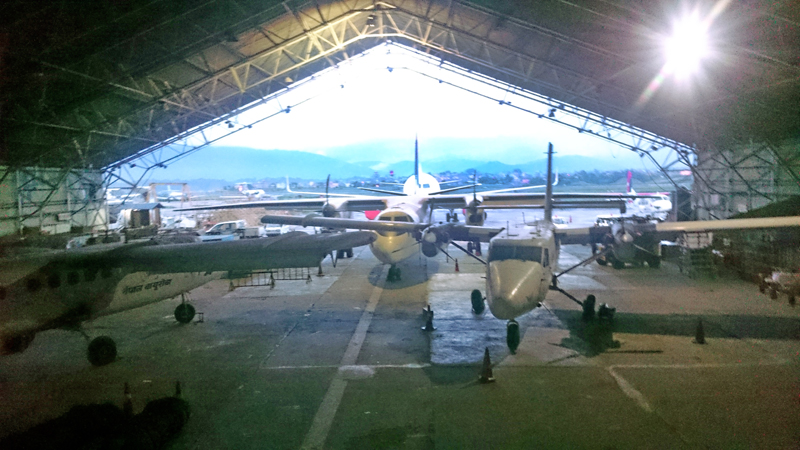Lack of accurate visibility info, parking bay puts TIA in a mess
Kathmandu, February 4
Lack of serviceability of the runway visual range, automatic equipment that provides tower controllers at the Tribhuvan International Airport (TIA) accurate measurement of visibility conditions that the flight crew is likely to encounter on the runway, continues to contribute to endless flight delays and chaos at the sole international gateway to Nepal.
The RVR equipment installed at the southern end of the runway in 2013 under International Competitive Bidding-02 project sponsored by the Asian Development Bank has since remained inoperative, according to a senior controller.
Commercial jetliners flying to Kathmandu require a visibility of 2,800m for landing, while satellite-based landing requires a much lower 900m. "International Civil Aviation Organisation stipulates the use of RVR for measuring visibility in the 900m range, technically called low visibility operations as human observations are prone to inaccuracies," a senior captain with the Nepal Airlines Corporation said, adding, "No wonder RVRs are listed as essential facilities at most international airports."
Inability of TIA controllers to provide accurate visibility information to flights results in aircraft continuing to hold in air even when actual visibility may be sufficient, the controller admitted.
In the aftermath of the Turkish crash landing in 2015, a hesitant aviation forecasting division of the Department of Hydrology and Meteorology prefers to provide conservative estimates of visibility in the absence of RVR and that has added to the mess. "This adds to the workload of the flight crew and controllers alike, making them more error-prone, a scary scenario, indeed," a senior director with the Civil Aviation Authority of Nepal explained.
Lack of sufficient number of aircraft stands at the TIA gets compounded with inclement weather during this time of the year, leading to unnecessary aircraft holding over the skies of Simara, as evident in the snap from the flightradar24 at Friday noon.
Aircraft holding in air at TIA not only leads to monetary loss for carriers and invariably higher ticket prices that eventually get passed on to the passengers, but also to unwarranted engine emissions in the sky, an international airline station manager said.
The CAAN's non-transparent process of granting landing slots to airlines during peak hours (10:00 am to 5:00 pm) reeks of corruption as some airlines have managed to grab multiple slots in the prized interval by acts of persuasion and coercion of CAAN's top officials, he claimed. "Such practice raises eye brows as the slots in other international airports are actually auctioned providing additional revenues to the airport."






